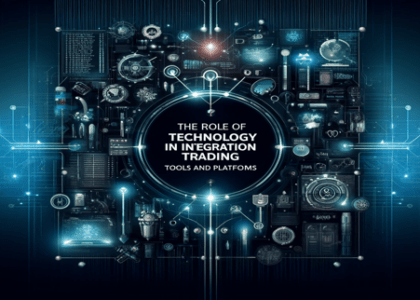In the fast-paced world of integration trading, risk management is not just a priority—it’s a necessity. Effective risk management can mean the difference between sustainable success and catastrophic failure. This article delves into the critical importance of risk management in trading and explores various strategies and best practices to mitigate different types of risks.
The Importance of Risk Management in Integration Trading
Risk management is the cornerstone of any successful trading strategy. By identifying, assessing, and controlling threats to an investment’s capital and earnings, traders can confidently navigate the volatile waters of financial markets. The primary objective is to preserve capital, ensure long-term profitability, and minimize potential losses.
Types of Risks in Integration Trading
Market Risk
Market risk, also known as systematic risk, refers to the possibility of an investor experiencing losses due to factors that affect the overall performance of the financial markets. This includes changes in interest rates, political instability, and economic shifts. Traders must stay informed about market conditions and use technical analysis to predict potential downturns.
Credit Risk
Credit risk arises when a counterparty fails to meet its contractual obligations. This type of risk is particularly prevalent in integration trading, where transactions often involve multiple parties and complex instruments. Evaluating the creditworthiness of counterparties and using credit default swaps can help mitigate this risk.
Operational Risk
Operational risk encompasses failures related to internal processes, people, and systems. This could be due to technical failures, human error, or fraud. Implementing robust internal controls, conducting regular audits, and investing in technology can significantly reduce operational risk.
Strategies for Effective Risk Management
Stop-Loss Orders
A stop-loss order is a fundamental risk management tool that automatically sells security when it reaches a certain price, thereby limiting potential losses. Setting stop-loss levels strategically based on market volatility and personal risk tolerance is crucial for effective trading.
Position Sizing
Position sizing determines the amount of capital allocated to a particular trade. By controlling the size of a trade, traders can manage their risk exposure. A common rule is to risk only a small percentage of the trading capital on any single trade, usually between 1% and 2%.
Portfolio Diversification
Diversification involves spreading investments across various financial instruments, industries, and other categories to reduce exposure to any single asset or risk. A well-diversified portfolio can help buffer against market volatility and sector-specific downturns.
Risk Management Tools and Methodologies
Value at Risk (VaR)
Value at Risk is a statistical technique used to measure and quantify the level of financial risk within a portfolio over a specific time frame. It provides a probable maximum loss a portfolio could suffer, helping traders make informed decisions.
Stress Testing
Stress testing involves simulating extreme market conditions to evaluate a trading portfolio’s performance under such scenarios. This helps in understanding potential vulnerabilities and preparing for adverse market movements.
Scenario Analysis
Scenario analysis is similar to stress testing but focuses on evaluating the impact of specific hypothetical events on a portfolio. This method helps traders assess potential risks from unlikely but plausible events and plan accordingly.
The Role of Risk Management in Long-Term Success
Effective risk management is pivotal in achieving long-term trading success. It ensures that traders can withstand market fluctuations, recover from losses, and capitalize on profitable opportunities without jeopardizing their capital. By integrating comprehensive risk management strategies, traders can enhance their resilience and adaptability in the ever-evolving financial landscape.
Continuous Learning and Adaptation
The financial markets are dynamic, and risk management strategies must evolve accordingly. Continuous learning, staying updated with market trends, and adapting risk management techniques are crucial for sustained trading success.
Conclusion
Risk management in integration trading is an ongoing process that requires diligence, discipline, and a deep understanding of market dynamics. By employing strategies such as stop-loss orders, position sizing, portfolio diversification, and tools like VaR and stress testing, traders can mitigate risks effectively. Ultimately, risk management aims to preserve capital, ensure profitability, and achieve long-term trading success.
By prioritizing risk management, traders can confidently navigate the complexities of integration trading and achieve sustainable success in their trading endeavours.






